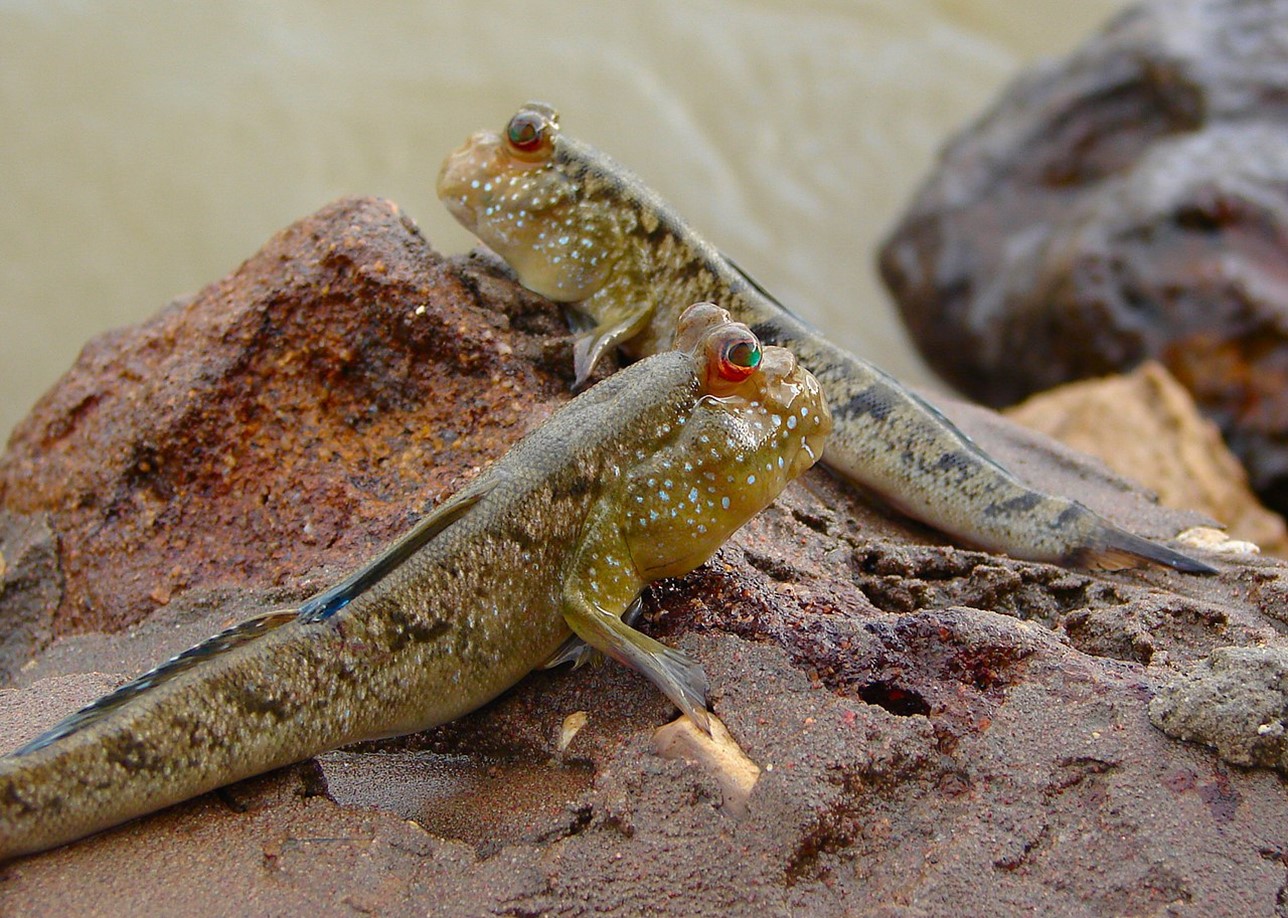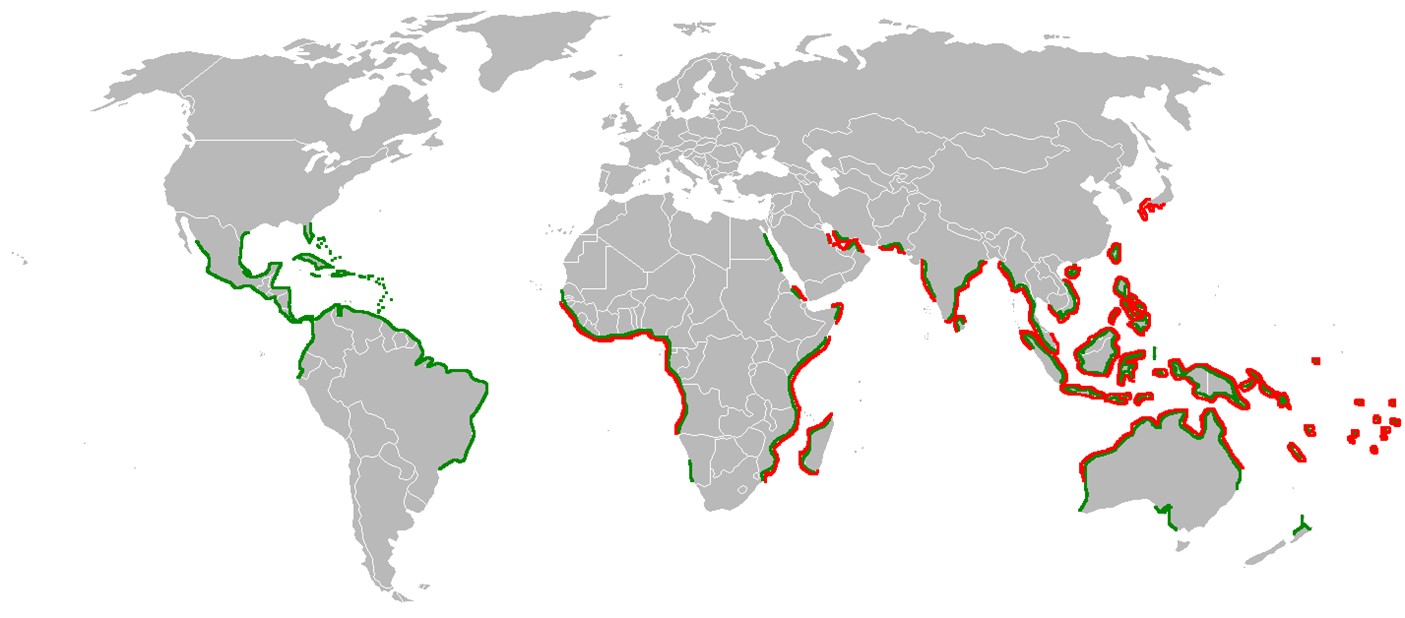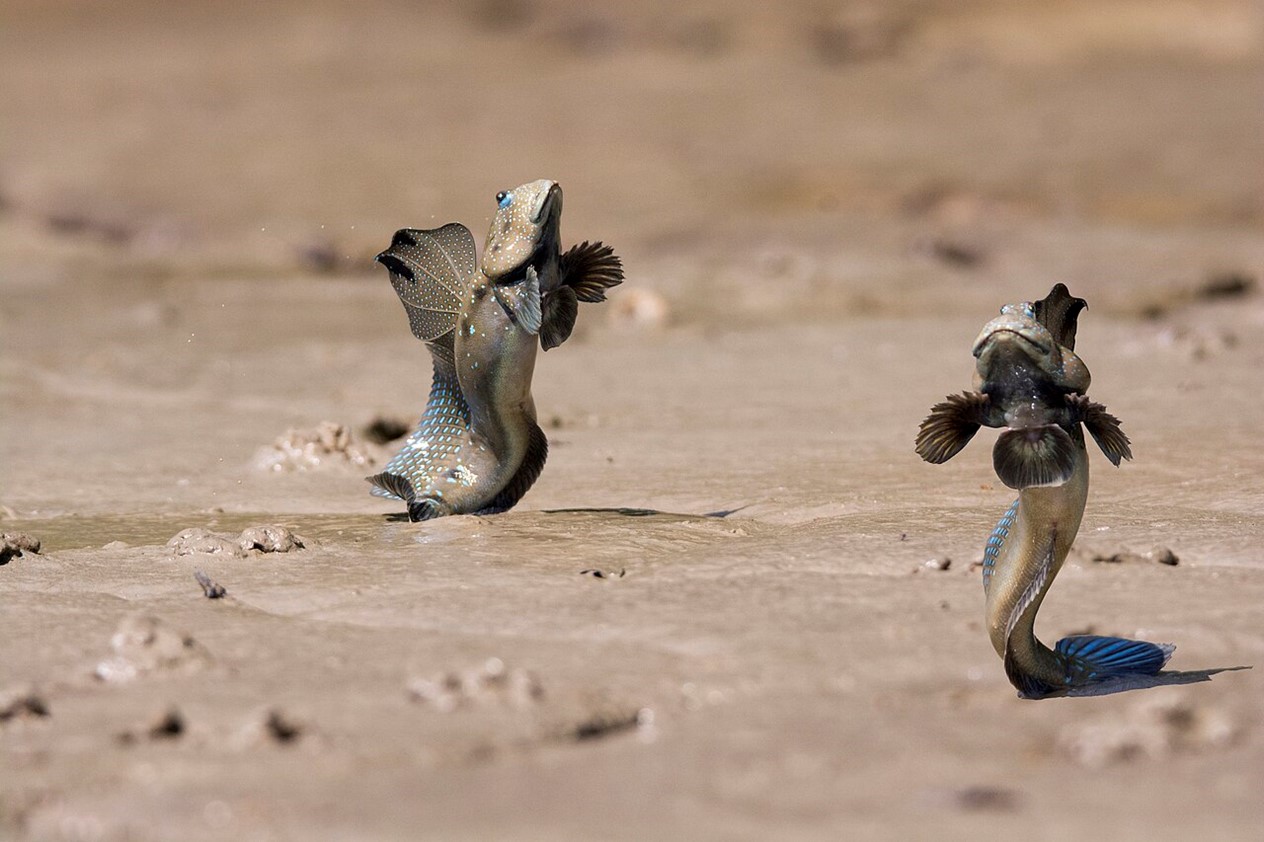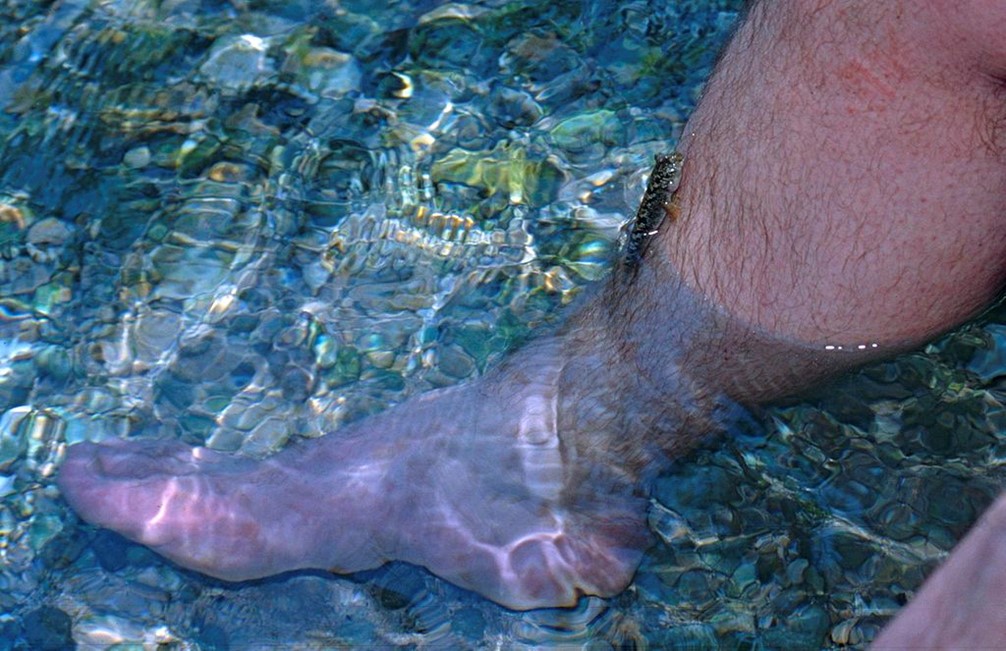
Credit: Bjørn Christian Tørrissen, CC BY-SA 4.0, via Wikimedia Commons
Almost 400 million years ago, our ancestors slowly emerged from the sea to breathe air and populate the land.
It may surprise you to know there’s another species making that same transition right now.
It’s the mudskipper, a 4- to 12-inch fish that looks like a frog with only front legs. It has a large frog-like head and smooth, green and brown skin dappled with spots.
The mudskipper lives in tropical and subtropical coastal flats and spends its time under or out of water, depending on the tide.
During high tide, it lives in a burrow in the muddy floor, safe from larger fish and other predators.
During low tide, it emerges to pull and wriggle its way across the mud, where it flops and leaps in mating dances.
It can breathe water with its gills. Or breathe air by absorbing oxygen directly through the skin of its throat.
But perhaps what’s most notable about the mudskipper are its eyes. Like land animals, they’ve lost the ability to focus underwater, and require some protection to keep them moist.
But the mudskipper has not yet developed eyelids, so it must repeatedly extend and retract its eyes into its head, a primitive form of blinking.
Studying mudskippers allows scientists to imagine how the vision of our earliest mammal ancestors may have developed—a legacy of sight that’s been passed down to us today.
Here’s looking at you, skipper.
Background
Synopsis: Around 375 million years ago, our ancestors, the tetrapods, emerged from the sea. Today, mudskippers are fish that are in the process of leaving the water, shedding light on how tetrapods may have made their evolutionary leap. These pioneers “dove” into the air from their normal habitat of water and had to develop new ways of breathing, as well as seeing, with eyes that could both focus in air and blink.
- Mudskippers are ray-finned fish that live in intertidal habitats ranging from marine to brackish to freshwater in the tropics and subtropics.

Distribution of mangrove forests(green), Distribution of mudskippers (red)
Credit: Oleksii0 at the Ukrainian language Wikipedia, CC BY-SA 3.0, via Wikimedia Commons- They belong to the family Gobiidae, and the subfamily Oxudercinae.
- Fossil evidence indicates they evolved over the past 5 to 20 million years (Miocene to Pliocene).
- They are the subject of scientific research because of their remarkable amphibious adaptation to both aquatic and terrestrial environments, with some spending three-quarters of their lives on land in specialized niches.
- To survive on land and in water, they have certain distinctive features.
- Brown-green mudskippers have a large, flattened head with bulging eyes and typically measure 4 to 8 in (10–20 cm) in length but can approach 12 in (30 cm).
- They have muscular pectoral fins and long bodies that they use to move on land with a combination of crawling, hopping and lunging motions that cause them to appear to hop, skip or walk across the mud. Some mating displays look like intricate dances.

Male mudskippers dance in a mating display after completing their burrow nests in the mudflats. Once a female mudskipper chooses a mate she will enter the burrow to lay hundreds of eggs for fertilization, after which the male tends the eggs.
Credit: Dwi Agung Sulistyo, CC BY-SA 4.0, via Wikimedia Commons - They burrow into mud to create shelter from predators during high tide, to thermoregulate and to build nests for their eggs.
- They include an air pocket in their burrow to help them breathe when submerged in low-oxygen conditions. An air pocket is also included in their nests to aid in embryonic development; flushing the nest with water initiates hatching.

A mudskipper climbs up a man’s leg south of Toliara in Madagascar.
Credit: Bernard DUPONT from FRANCE, CC BY-SA 2.0, via Wikimedia Commons - They may climb up roots and branches in search of prey.
- They feed on algae, small invertebrates, insects and other mudskippers.
- They have developed three different methods of respiration.
- Like fish, they can use gills to extract oxygen from water while submerged, so they are able to live an entirely submerged existence.
- They can absorb oxygen through their skin, mouth and throat, as long as they are wet (cutaneous respiration).
- They can take water bubbles into the chambers that house their gills and absorb oxygen directly into specialized tissues lining those chambers as well as directly into their gills.
- Unlike other fishes, mudskippers have developed protruding eyes that are able to see in all directions and blink.
- They are able to raise and lower their eyes like turtles do when they blink, and they can independently rotate them like a chameleon to locate prey both above and below the water surface.
- Like humans, their eyes have become adapted for aerial vision and can’t focus when submerged, making life out of the water safer than within it.
- Aquatic animals don’t need to blink, but all terrestrial animals must blink to clean, moisten, and protect their eyes.
- Mudskippers have developed a primitive way of blinking when they are out of the water by adapting their existing muscles to retract their eyes into dermal cups moistened by mucus on their skin and water from their environment. They rarely blink while under water.
- Because soft tissues are generally not preserved, paleontologists have studied mudskippers to understand some of the adaptations that might have been required for early tetrapod life on land.
- Fossil evidence supports the idea that the eyes of early tetrapods may have retracted in a similar way to those of mudskippers.
- Today, animals blink in a variety of ways with multiple glands and membranes, but the first step may have been a simple rearrangement of muscles.

